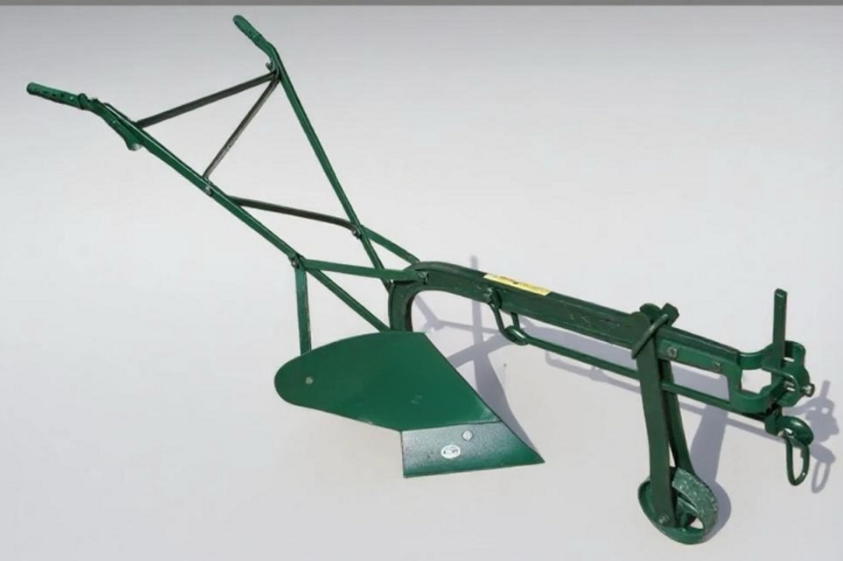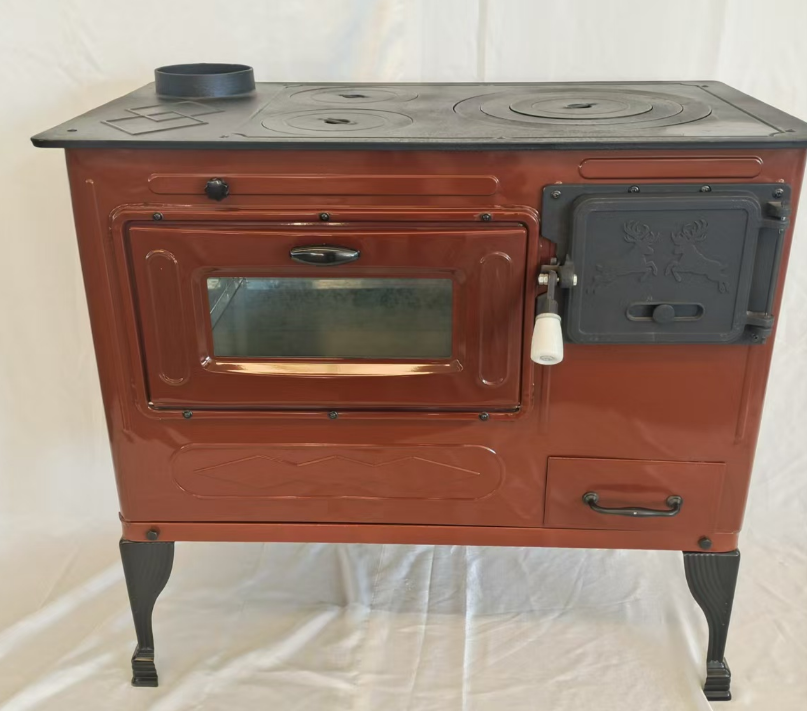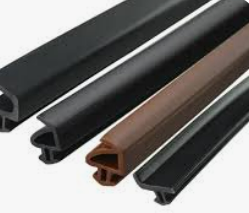Cast Iron Stoves: The Ideal Choice for Efficient Heating and Timeless Elegance
Cast iron stoves have long been recognized for their durability, efficiency, and classic appeal. Whether you're seeking a cast iron log wood stove to heat a cozy cabin or a cast iron wood burning fireplace to add warmth and charm to your living room, these stoves offer a unique blend of functionality and style. Designed for both modern homes and rustic retreats, cast iron stoves are known for their exceptional heat retention and even heat distribution. In this article, we’ll explore the key features of cast iron stoves, their installation requirements, and the historical origins of these versatile heating solutions.
The Internal Structure of Cast Iron Stoves and Its Effect on Heat Distribution
One of the standout features of cast iron stoves is their ability to evenly distribute heat. The unique internal structure of a cast iron wood burning fireplace or cast iron log wood stove is designed to maximize heat retention. Cast iron itself is a dense material that absorbs and retains heat much longer than other materials like steel. This means that once your cast iron stove reaches the desired temperature, it continues to radiate heat long after the fire has burned down.
The internal structure of cast iron stoves typically includes a firebox that efficiently burns wood or other fuels, while surrounding metal plates, like the stove cast iron plate, help distribute the heat evenly throughout the room. The heavy-duty nature of cast iron ensures that heat is retained and radiated into the room, creating a consistent, comfortable warmth without the sharp temperature fluctuations often seen in other stoves.
This high heat retention not only ensures more efficient heating, but it also helps lower the amount of fuel needed, making cast iron stoves a cost-effective choice for homeowners seeking long-term value.
Installation and Placement Requirements of Cast Iron Stoves
The installation and placement of cast iron stoves is a critical factor in ensuring their efficient performance and safety. Proper installation guarantees optimal heat distribution, which is essential for maximizing the heating potential of a cast iron wood burning fireplace.
To begin with, cast iron stoves should be placed on a non-combustible surface, such as a heat-resistant hearth or fireproof floor plate. This helps prevent any potential fire hazards and ensures the stove operates safely. The stove cast iron plate, which often serves as the base, is designed to withstand high temperatures and should be placed on a surface that can tolerate the weight and heat output of the stove.
Additionally, the stove must be installed with a proper chimney or flue system to vent smoke and gases safely outside the home. Cast iron stoves require an unobstructed venting system to ensure proper airflow, which in turn supports combustion efficiency and safety.
It's also important to maintain a safe distance from flammable materials, such as curtains, furniture, and walls, to ensure proper ventilation and to avoid overheating nearby objects. When installed correctly, cast iron stoves can heat a room evenly and effectively, creating a cozy and safe atmosphere.
The Origin of Cast Iron Stoves
Cast iron stoves have a rich history that dates back centuries. The first cast iron stoves were developed in Europe during the 17th century, offering a more efficient way to heat homes than traditional open fires. These early designs were far more effective at retaining and radiating heat, making them a preferred choice for heating homes in colder climates.
Over the years, cast iron stoves evolved from simple designs into sophisticated heating appliances. In the 19th century, cast iron wood burning fireplaces became a staple in American homes, especially in rural areas where wood was abundant. Today, cast iron stoves have remained a symbol of warmth and reliability, favored for their classic style and high efficiency.
Modern innovations have improved the performance and aesthetic appeal of these stoves, with sleek designs and advanced features that offer enhanced efficiency and better heat control. The materials and techniques used in crafting cast iron stoves have also evolved, but the core principle of durability and effective heat distribution remains unchanged.
The Advantages of Cast Iron Stoves in Modern Homes
In addition to their historical significance, cast iron stoves offer a number of advantages that make them highly sought after in contemporary homes. Their durability is unmatched; a well-maintained cast iron wood burning fireplace can last for decades, providing consistent, reliable heating year after year. This makes them a worthwhile investment for homeowners looking for long-term performance.
Another key benefit is their efficiency. Cast iron stoves are designed to maximize heat retention and distribution, ensuring that rooms are kept warm with minimal fuel. The use of high-quality materials like the stove cast iron plate also contributes to the stove’s ability to radiate heat effectively, creating a comfortable environment without wasting energy.
Moreover, the versatility of cast iron stoves means they can be used in a variety of settings, from traditional homes to more modern, minimalist spaces. Their timeless design ensures that they complement a wide range of interior aesthetics, offering both practical heating solutions and visual appeal.
Maintenance and Care of Cast Iron Stoves
To ensure your cast iron stove operates at its best for years to come, regular maintenance is essential. Fortunately, cast iron stoves are easy to care for and maintain. The most important step is to keep the stove clean, removing any ash or soot that may build up in the firebox or chimney.
You should also inspect the stove for any cracks or damage that could affect its performance. Regularly checking the cast iron fireplace plate for wear and tear will help prolong the stove’s lifespan. Additionally, it is recommended to have the chimney or flue cleaned annually to ensure proper ventilation and to prevent the buildup of harmful gases.
With the right maintenance and care, cast iron stoves continue to provide reliable, efficient heating for many years, offering both functionality and style to any home.
Why Choose Cast Iron Stoves
For those looking for a durable, efficient, and stylish way to heat their homes, cast iron stoves are the ideal solution. Offering exceptional heat retention, ease of maintenance, and a timeless aesthetic, cast iron stoves remain one of the most popular choices for homeowners around the world. Whether you’re in the market for a cast iron log wood stove, a cast iron wood burning fireplace, or a stove cast iron plate to enhance your current system, these stoves deliver outstanding performance and value.
Investing in a cast iron stove means more than just purchasing a heating appliance—it means securing a long-term, reliable source of warmth that blends traditional craftsmanship with modern efficiency.
-
Plough Wheel Cast Iron Material Enhances Load-BearingBalitaNov.10,2025
-
Cast Iron Cooking Stove Heat Retention Ensures Even Food HeatingBalitaNov.10,2025
-
Rubber Strip Shock Absorption Protects Window EdgesBalitaNov.10,2025
-
Aluminum Profiles High Corrosion Resistance Suits Coastal AreasBalitaNov.10,2025
-
Window Handle Aluminum Material Ensures Lightweight DurabilityBalitaNov.10,2025
-
Sliding Roller Plastic Housing Fits Aluminum Sliding WindowsBalitaNov.10,2025
-
 Plough Wheel Cast Iron Material Enhances Load-BearingNov-10-2025Plough Wheel Cast Iron Material Enhances Load-Bearing
Plough Wheel Cast Iron Material Enhances Load-BearingNov-10-2025Plough Wheel Cast Iron Material Enhances Load-Bearing -
 Cast Iron Cooking Stove Heat Retention Ensures Even Food HeatingNov-10-2025Cast Iron Cooking Stove Heat Retention Ensures Even Food Heating
Cast Iron Cooking Stove Heat Retention Ensures Even Food HeatingNov-10-2025Cast Iron Cooking Stove Heat Retention Ensures Even Food Heating -
 Rubber Strip Shock Absorption Protects Window EdgesNov-10-2025Rubber Strip Shock Absorption Protects Window Edges
Rubber Strip Shock Absorption Protects Window EdgesNov-10-2025Rubber Strip Shock Absorption Protects Window Edges












